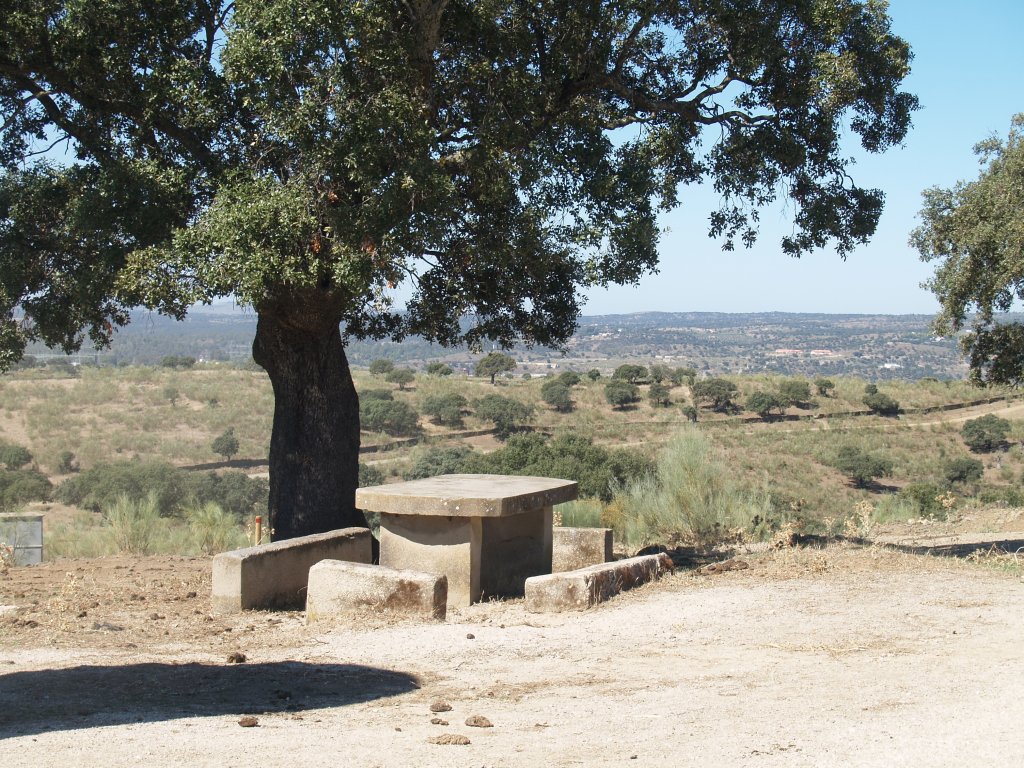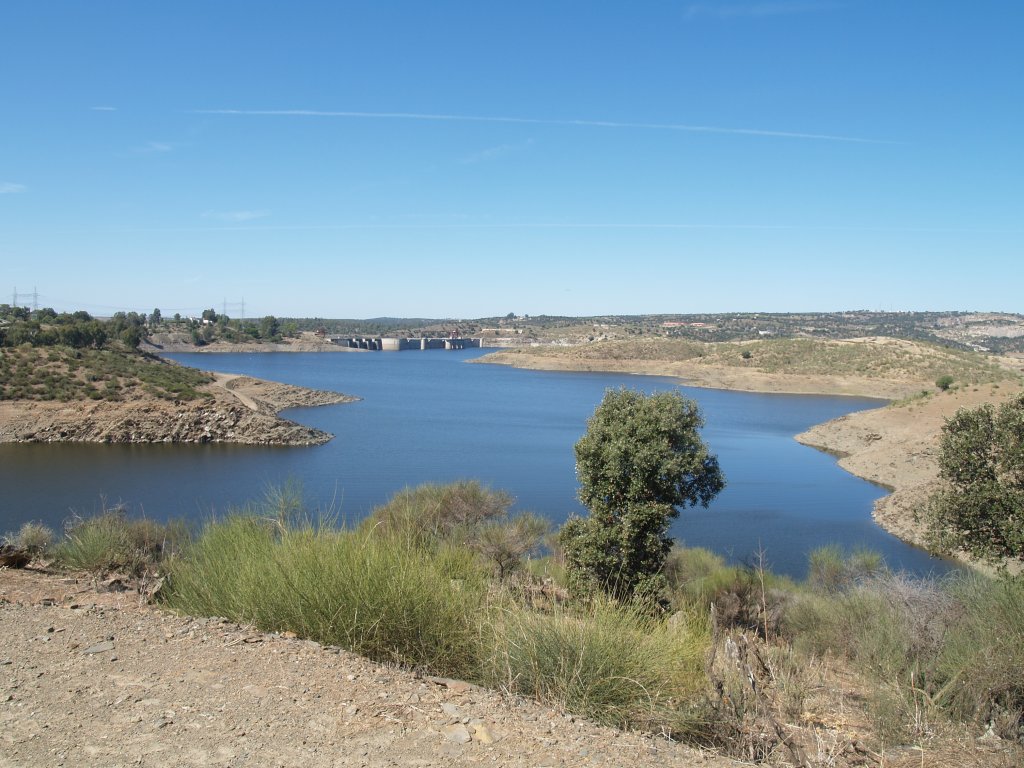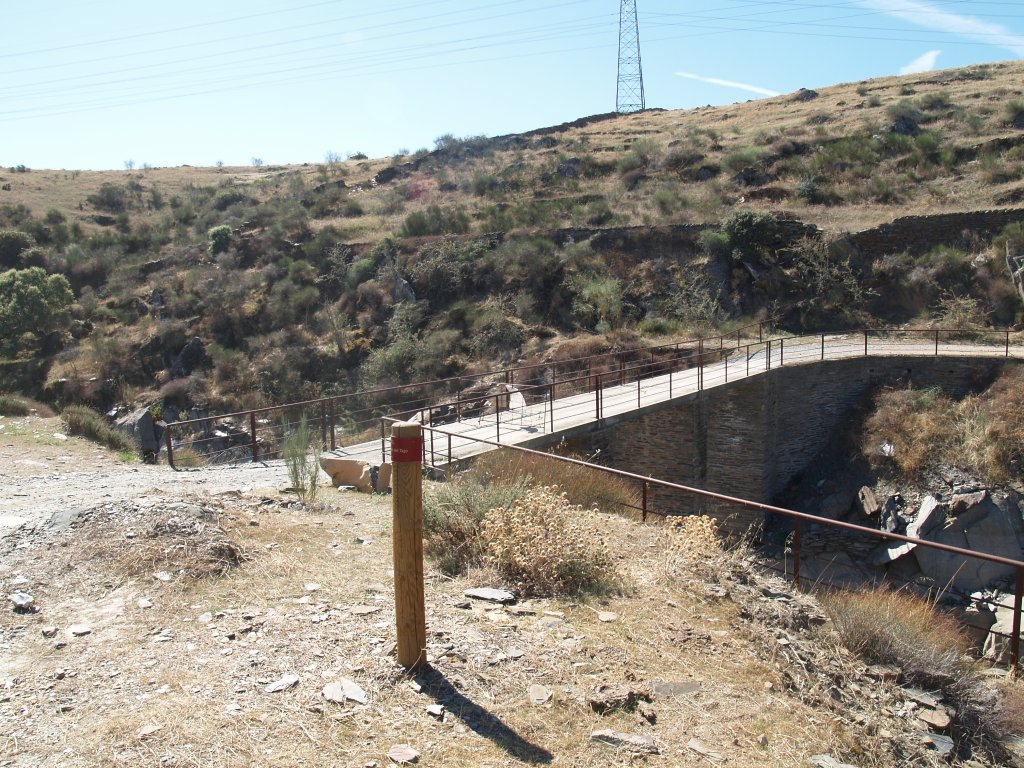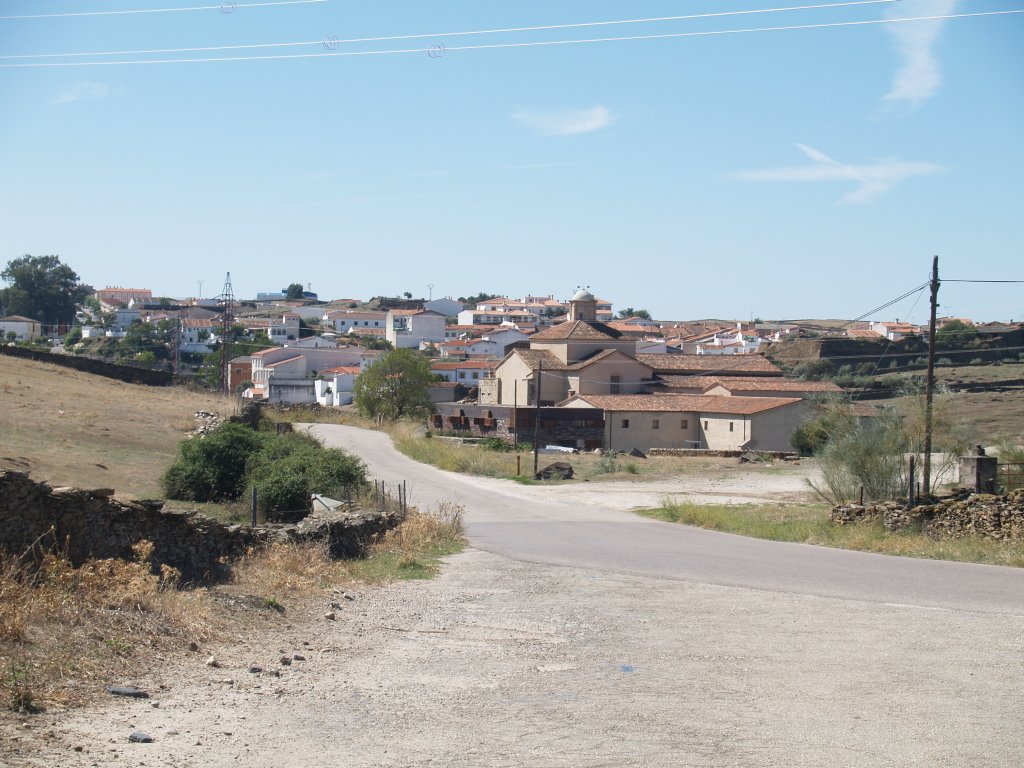Stage 39: Mata de Alcántara - Alcántara
Description

Alcántara, monumental city
This Stage begins at Mata de Alcántara, from where the route heads to Alcántara, a charming city with a long history that is only a few kilometres away. Its strategic position has deeply influenced its history, with archaeological finds from the Palaeolithic era. Notable amongst its important collection of monuments is its spectacular Roman bridge.
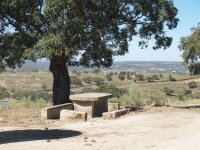
The Stage begins on the road out of Mata de Alcántara, along which the Trail continues for just over 2.2 km, including the turn to the right at the first intersection.
Further on, to the right, is an entrance to a private hunting ground with a gate and cattle grid along which runs a comfortable track. Large holm oaks (Quercus ilex) dot the landscape, alternating with an abundance of rockrose (Cistus sp.) and broom (Retama ssp.) thickets.
The route takes a sharp turn to the left, then continues towards a livestock farm where a stone table and a few benches in the shade of a tree provide an opportunity to rest. From here, one can already glimpse the town of Alcántara on the horizon. The Alcántara Reservoir appears, yet again, and will remain visible throughout the route.
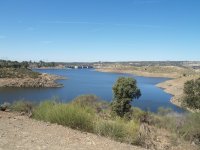
The landscape changes near the reservoir. Whereas the shores are covered with more trees, the areas farther away from the reservoir are dominated by scrub.
Alcántara Reservoir is an ideal site for bird watching. Different raptor species including the Griffon Vulture (Gyps fulvus) and Bonelli's Eagle (Hieraaetus fasciatus) inhabit this land.
The Trail continues along a wide, comfortable track, without significant slopes, until it reaches Alcántara. The reservoir can be seen, unmistakable in the distance, as one approaches the city. From here, the route ventures into the "Embalse de Alcántara” Special Protection Area for Birds (SPA).
In this last stretch, and near the endpoint, the Trail runs along the reservoir's edge until it crosses a bridge closed with a gate. From here, the route heads upwards along a road leading to Alcántara, which is just a few metres away. The path turns into a road shortly before it passes through another gate. To the right is a “bohío”, a typical hut formerly used by shepherds, which is currently being restored due to its ethnographic value.
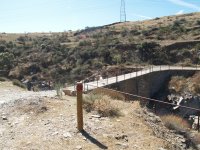
Very close to the city, to the right, is a power station. Next appears the convent-inn of Alcántara, the former convent of San Bartolomé, built in the fifteenth century and recently restored. The route now ventures into Llanos de Brozas Site of Community Interest (SCI).
From here, one can see the Convent of San Benito, whose construction begun in the early sixteenth century, and combines various architectural styles. After crossing a stone bridge, the Trail heads straight into Alcántara; a small town with a notable history and important cultural offerings: dolmens and menhirs bear witness to early human settlements and remains of Muslim, Jewish and Roman culture speak of the influence they had on Alcántara and the city it is today.
Sites of interest
Profile
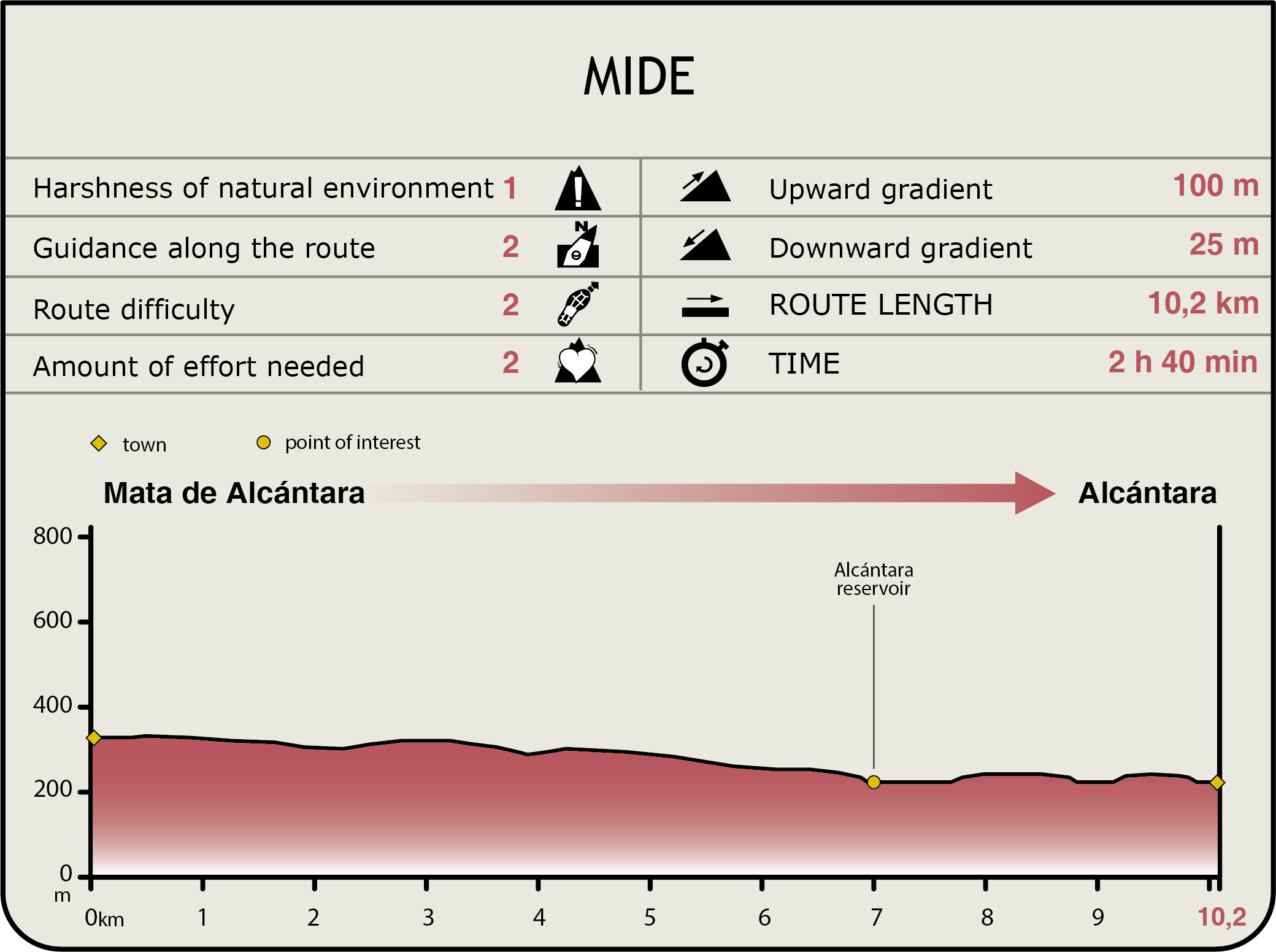
MIDE (Method for the Information of Excursions)
Featured
Información adicional
Roman bridge of Alcántara
Built by different Lusitanian peoples, it is believed that its construction begun around 75 A.D. under Caius Iulius Lacerit, and was completed between 103 and 104 A.D. in the times of the Emperor Trajan.
It consists of three elements: bridge, arch and temple. The bridge is 194 m long, 8 m wide and 71 m high.
It has been restored over the centuries and still preserves its old defence system: a slate and brick tower called Torre del Oro. It was declared a National Monument on August 13, 1924.
Chapels and Houses
Alcántara is home to numerous chapels, including the Chapel of Nuestra Señora de los Remedios; the Chapel of Soledad, in the heart of the Jewish quarter; and the Chapel of San Antonio, built in 1213 to commemorate the definitive conquest of Alcántara.
There are also several interesting houses, including the house of Claveria, where the "gatekeeper" of the convent and archive lived; the house of Perero, an aristocratic family that has lived in Alcántara since the creation of the Military Order; Pacheco's House, with a large granite ashlar façade and the coat-of-arms of the family; the Barrantes Maldonado House, a manor with the remarkable coat-of-arms of the Barrantes and Maldonado families; the house of Oviedo, an aristocratic family from Asturias that settled in Alcántara in the 15th century; the palatial mansion of the Barco family who settled here in the 16th century; the palatial mansion of the Marquis of Torreorgaz; the palatial mansion of Topetes Escobar, who settled here in the 13th century; the house of Arias de Quintanadueñas; the house of Bootello and the house of Vélez Suárez.
